|
===================================================
How To Break 80 Newsletter
December 6, 2006
"The Web's Most Popular Golf Improvement Newsletter"
===================================================
In this issue we'll discuss...
1) Eliminating Your Slouch
2) Balance is Power
3) Question of the Week- Uphill Lies
4) Article- How To Fine Tune Your Tempo and Rhythm
5) Article- Five Golf Exercises That Strengthen and Tone
Special Note from Jack: As many of you know we launched the Putting DVD yesterday and we've been inundated with orders. I had no idea how quickly or badly you wanted it but we are going through the inventory much faster than anticapted.
And also, I want to apologize because for a short time yesterday we had the wrong price listed for my readers and it caused some confusion. The situation was corrected immediately. In case you missed it, you can see it here:
http://www.howtobreak80.com/putting.htm.
(And if you're a customer, you get a discount and that special link would have arrived in your email inbox yesterday so check there. If you're a customer and did not receive this email please contact us at support@howtobreak80.com so we can provide it to you.)
===================================================
1) Eliminating Your Slouch
===================================================
Many players try so hard to keep their heads down during their swings they end up tucking their chins against their chests. Tucking your head down leads to hunching your upper back, which eventually leads to slouching—one of the biggest killers of a good swing. Slouching makes a full turn and a free swing almost impossible.
Good posture at address requires you to lift your chin away from your chest, eliminating your slouch. This in turn enables you to rotate fully and turn your left shoulder under your chin.
If you slouch at address, here are six tips to help eliminate this problem.
1. Keep the head in a natural position
2. Back straight
3. Flex knees
4. Bend from the waist
5. Stick rear end out
6. Tip front shoulder up slightly
It’s not crucial that you keep your head perfectly still during your swing. Even the best players move their heads during their swings a little. What’s important is lifting your head from your chest so that your body is free to rotate during the swing. That’s your natural head position.
Address the ball by bending from your hips, not by curling your spine. This aligns your head and spine so that you can rotate your body fully and can turn your left shoulder under your chin. Also, flex your knees and stick your butt out while tilting your front shoulder up slightly.
Good posture eliminates your slouch. It correctly positions your spine angel and center of gravity. That results in a fuller turn and better shots. Check your posture regularly in a mirror and compare your body position with that of the pros on TV. If it feels awkward, it’s probably correct.
=================================================== 2)
Balance is Power
===================================================
Many high-handicappers fail to flex their knees enough at address. They also slide left or right during their swings. Some even sway. These swing faults inhibit good ballstriking and decrease power.
Maintaining sufficient knee flex and remaining centered over the ball are crucial to crisp ballstriking and increased distance. In the golf swing, balance and stability reign supreme, regardless of your golf handicap.
OOne drill to improve balance and stability uses balance disks, rubbery flexible discs designed to be stood, sat, kneeled, or laid on, with the intention of stimulating the core muscles of your body. Your core extends from your neck to your lower body, not including your legs, and is arguably the motor that drives your swing. If you don’t have balance discs, try two bare feet on fluffy pillows.
Practice standing on the discs. If you’ve ever tried standing on balance discs you know it’s a challenge. Once you have a feel for that, assume your address position with a club in your hands. Standing on the disc helps you get a feel for posture, which includes a straight back and a forward tilt from the hips. The lack of stability on the discs trains you to flex your legs more to maintain stability.
Once you’re comfortable standing on the discs, try taking a few swings. Immediately you will see that staying balanced means keeping your knees flexed and minimizing excessive sway or lean, whether forward, backward, or to the side. Finally, take the discs to the practice range or the course and hit some balls. You’ll soon be striking them better than you ever have.
This drill drives home the importance of staying centered over the ball and preventing excessive slide or sway. Too much sliding or leaning produces swing problems, cripples ballstriking, and generates inconsistency. More importantly, they decrease power.
Work on the drill whenever you can. If you eliminate excessive sliding and swaying from your swing, you’ll not only generate more distance, you’ll improve your ballstriking and consistency as well.
=================================================== 3)
Question of the Week- Uphill Lies
===================================================
From Quinton Burgess
Uphill Lies
Q. Hi. Jack. Your book, How to Break 80, is great. I am down to 14. I was a19. The tips from your newsletter are very helpful as well. I need to develop my technique for hitting from 150 to 190 yards, with an uphill body position and ball position. Thank you.
A. Hitting from an uphill lie is tricky from any distance. Consider these three factors when hitting uphill (1) your setup, (2) the slope, and (3) the shot’s trajectory.
Club selection is a key consideration with uphill lies. The angle of the slope changes the effective loft of a club. In severe cases, a 7-iron becomes a 9-iron. Experience tells you just how much of a change to expect.
Tailor your stance to the slope. Your spine must be perpendicular to the slope, meaning your shoulders will tilt back and your right knee will support most of your weight (for right-handers). Weight distribution at address ultimately determines the shot’s success.
Keep your weight pretty much where it was at address during the backswing. The less drift, the cleaner the shot. And concentrate on making a wide takeaway and keeping your wrists quiet in the backswing’s early stages.
Since your weight’s farther back and your lower body less active than usual, you’ll have a tendency of pulling the ball left, caused by your hands getting over active at impact. To avoid this, keep the clubface looking at the ball as long as possible by swinging with the slope. Finish in balance, with the right leg supporting some of your weight.
The best drill for hitting from an uphill lie is to drop a ball on an upslope and hit. Work on the shot until it becomes second nature.
If you've got a golf question you'd like answered, send an email to us at
questions@howtobreak80.com and we'll review it. I can't guarantee that we'll use it but if we do, we'll make sure to include your name and where you're from.
===================================================
If you want to truly discover the secrets of shooting like the Pros and creating a more reliable and consistent swing, check out:
http://www.HowToBreak80.com
P.S. Feel free to share this newsletter with family and friends. If you
would like to subscribe to this newsletter, send a blank email to
break80ezine@aweber.com
===================================================
About the Author
===================================================
Jack Moorehouse is the author of the best-selling book
"How To Break 80 and Shoot Like the Pros!". He is NOT a golf pro, rather a working man that has helped thousands of golfers from all seven continents lower their handicaps quickly. His free weekly newsletter goes out to thousands of golfers worldwide and provides the latest golf tips, strategies, techniques and instruction on how to improve your golf game.
|
Tools To
Help Your Game!
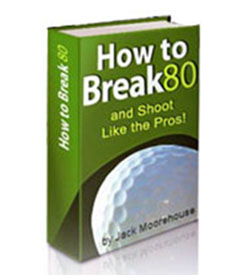
eBook
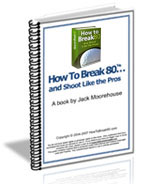
Physical Book
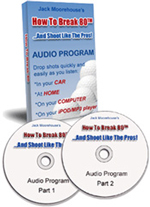
Audio Program
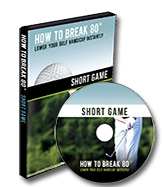
Short Game DVD
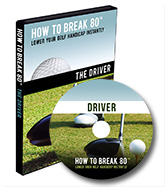
Driver DVD
|